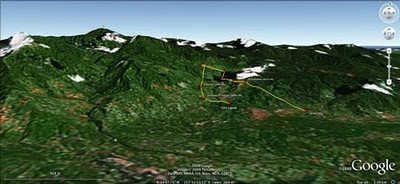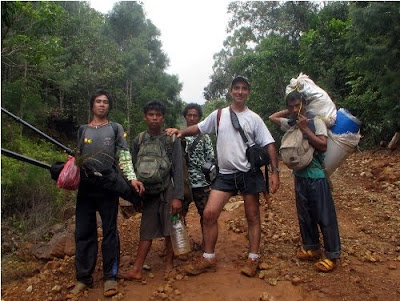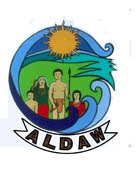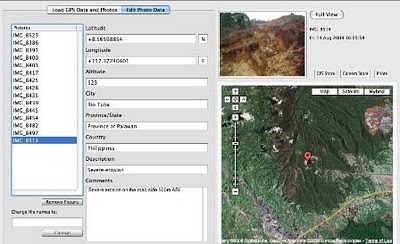21 May, 2012, HONIARA - “
Of course we know a lot about our land and sea, but we didn’t realise just how much we do actually know ...” representatives of Chivoko community of Choiseul province, Solomon Islands, pointed out after the Participatory 3D Modelling (P3DM) exercise was completed. As we discovered today, P3DM goes far beyond making a map; it is a process that, if efficiently and correctly used, can become a powerful tool to give voice to those people that over time have being excluded from decision-making processes within the mainstream society.
The “Participatory Mapping and Community Empowerment for Climate Change Adaptation, Planning and Advocacy, an Orientation and Project Planning Workshop” opened today in Honiara, Solomon Islands.
Organized by the Technical Centre for Agriculture and Rural Cooperation ACP-EU (CTA), in partnership with The Nature Conservancy UNDP Solomon, Partners with Melanesia (PwM) and three UNDP Co-funded projects,
namely Strengthen Environment Management and Reducing the Impact of Climate Change (SEMRICC);
Strogen Waka lo Community fo Kaikai (SWoCK) and
Pacific Adaptation for Climate Change (PACC), the event brought together more than 80 people from 17 countries, including Australia, Cook Islands, Federated Sates of Micronesia, Fiji, Italy, The Netherlands, New Zealand, Palau, Papua New Guinea, Philippines, Samoa, Solomon Islands, St. Vincent and the Grenadines, Trinidad and Tobago, UK, USA and Vanuatu.
.JPG) |
Hon. Rense Sore, Permanent Secretary of MECDM
opens the event |
The workshop was opened by Rense Sore, Permanent Secretary of the Ministry of Environment, Climate Change, Disaster Management and Meteorology (MECDM).
His intervention was followed by the one delivered by Dr. Douglas Lee, Director Climate Change Division (MECDM) who introduced the recently developed National Climate Change Policy for Solomon Islands and the one by David Hiriasia, Director Meteorology (MECDM).
The sessions of the day combined presentations on participatory mapping methods and their use, with group exercises and open spaces for interactive information sharing; a practical session on P3DM enfolded in parallel: assisted by a facilitator, students from the Naro community started assembling a 1:5000 scale model of their village. Once completed, the model will be populated by elders coming from the village. Once finalised the model will include a traditional coastal conservation area (tambu area) located in front of the main settlement.
This activity will allows workshop participants to have a factual experience of what a participatory 3D mapmaking process is all about, students to acquire a new skill, and finally villagers to gain access to an updated, scaled and geo-referenced replica of their territory for further development and use .
The today’s focus of the event was on opportunities and challenges of practicing Participatory GIS in developing countries, especially when assessing climate change impacts and adaptation measures.
As different experiences of P3DM carried out around the world reveal, participatory mapping can be a key instrument for local and indigenous communities to document and express their local knowledge and to communicate it through a visual language easily understandable for outsiders. In this sense, the power of the maps embraces at the same time the risks of doing mapping itself: if, on the one hand, participatory mapping process can enable local communities to give visibility to their valuable knowledge and thus to increase their contribution in influencing decision-making processes, on the other hand, the translation of local knowledge into public information, and out of local control, might lead to undesired exploitation or generate conflicts.
.JPG)
If misused, in fact, information shown on maps might open up the door to outsiders to take control over local resources. This is why it is fundamental to carefully consider risks and benefits and to set clear objectives with communities before carrying out participatory mapping activities, as Giacomo Rambaldi (CTA) pointed out. This will help to find ways to safeguard local knowledge, keeping some of the sensitive information confidential, and to mitigate risks.
Over time, participatory mapping activities in general, and P3DM in particular, have been undertaken in different parts of the world to address different issues, from self-determination of local communities to the management of territorial conflicts, from land titling to community based planning and management, including participatory watershed planning and management, hazard management and climate change adaptation, among others.
.JPG)
Among the P3DM experiences presented today, those in the Pacific Region mostly focussed on climate change adaptation. For many communities, participatory 3D models have been important tools to understand their land and the gradual impacts of climate change on traditional territories, as well as to envisage possible future scenarios and take informed actions. Over time, indigenous and local communities have developed climate change adaptation practices based on existing knowledge and on observation of the natural phenomena. In this context, P3DM can be used as a tool to merge indigenous knowledge with available science and technology to best deal with and mitigate climate change impacts. In the case of the community of Boe Boe, Solomon Islands, as its representatives reported, the model helped villagers to identify the raise of the sea level and the progressive erosion of the coastline; based on this observations, the community decided to not longer build houses on the coast while moving to the inland instead. The P3DM exercise in Boe Boe, supported by The Nature Conservancy, was successful in facilitating community land use planning and the sustainable management of natural resources. But this was not the only outcome the P3DM activity achieved.
.JPG)
As Winifred Pitamama, Boe Boe’s representative, stressed out "
during the P3DM process women and children learned a lot about our area. The model showed our sacred places, our inland before our ancestors moved to the coast, where to collect shell, where to fish (…). But, especially it helped women to best plan for the future. At the beginning it was a bit challenging for women, because they don’t raise their concerns, they are generally quite (…). This has been a tool to share our views”. As a teacher, Winifred is using the model for educational purposes in her work with children. “They learn to recognize their places” she said. As in Boe Boe, other communities made use of the participatory 3D models to better understand their territories, what was affecting them and to raise awareness about those issues.
This is the case of Indigenous Peoples in the Philippines, that were able to visualise the potential impact of a large scale mining operation scheduled to take place within their ancestral domains and to induce the local government to stop the intervention, as Dave de Vera (PAFID) reported.
Therefore, P3DM becomes a powerful tool to visualise the past, the present and the future, to analyse the movement of natural resources and to design action plans to protect or stimulate the restoration of resources, appointing people to monitor the process in the future.
An initiative supported by:
Read more:
.JPG)

.JPG)
.JPG)
.JPG)
.JPG)
.JPG)
.JPG)





















